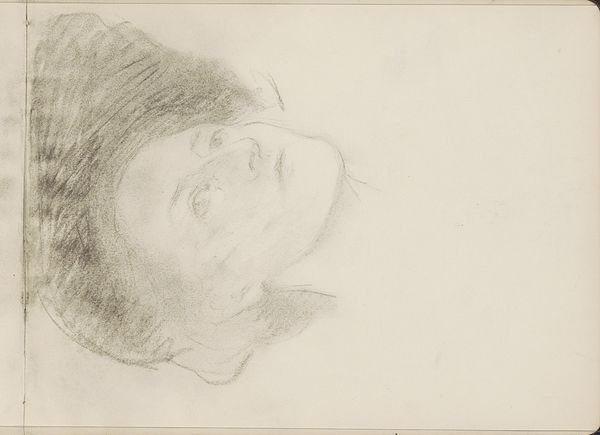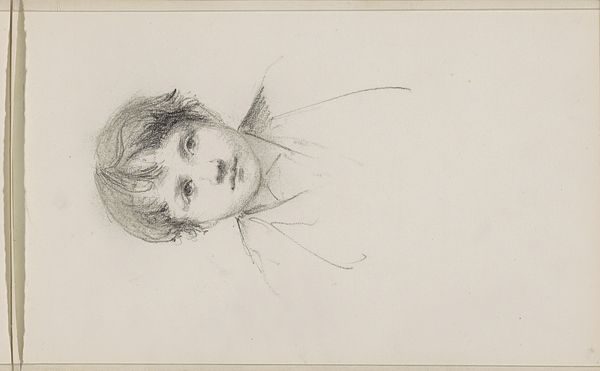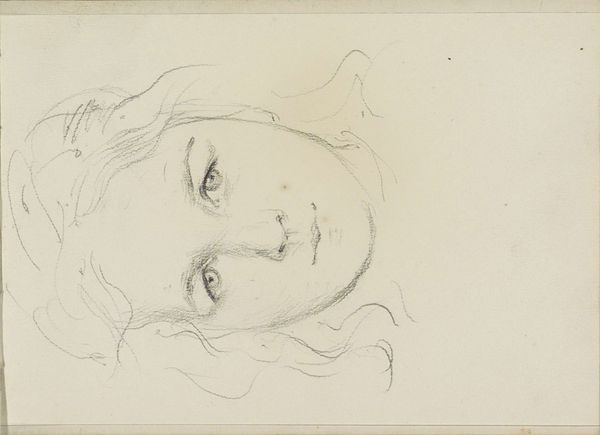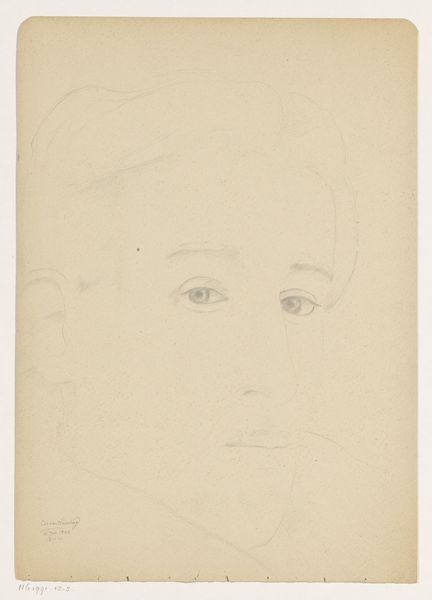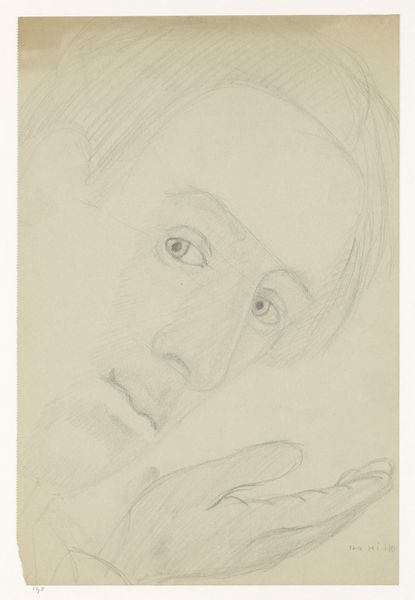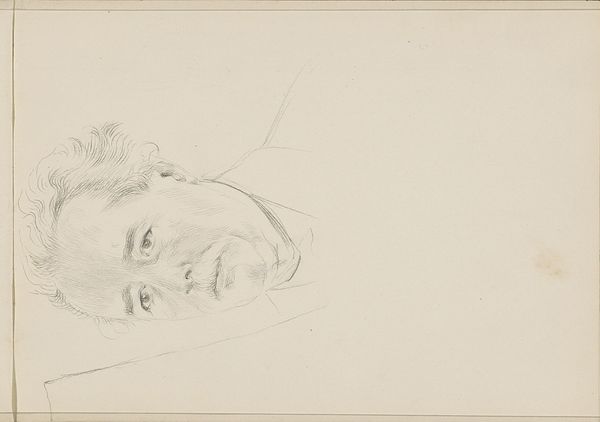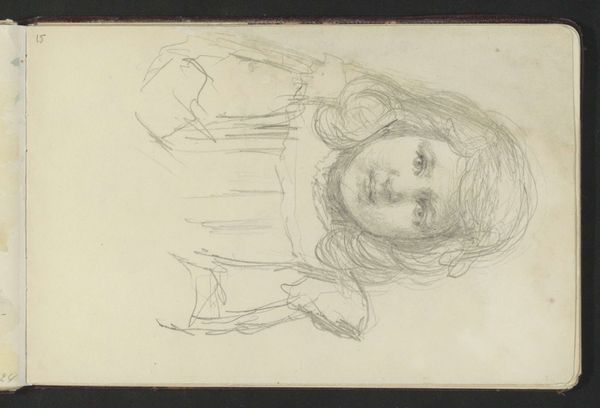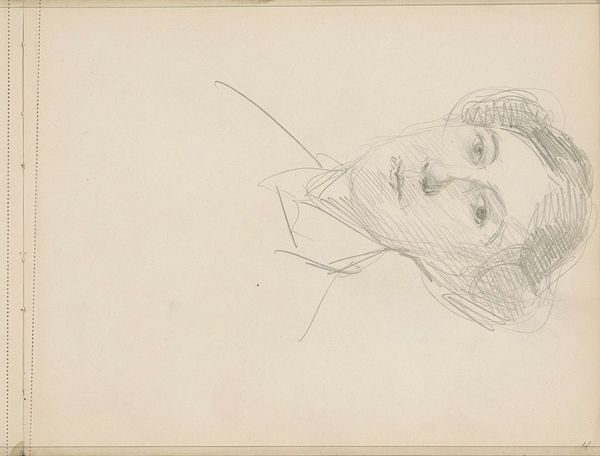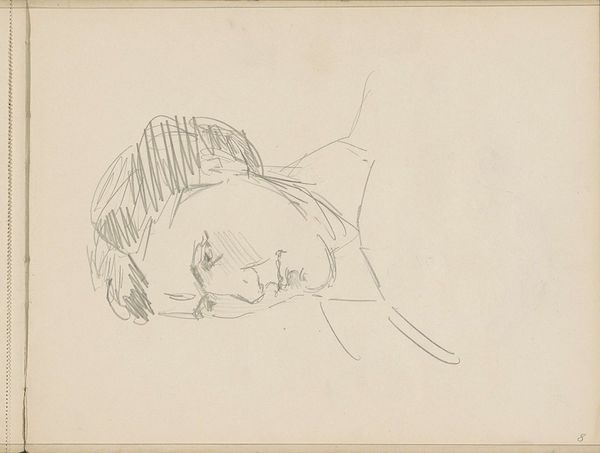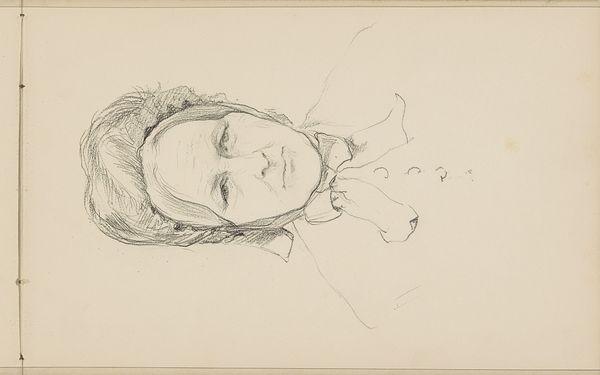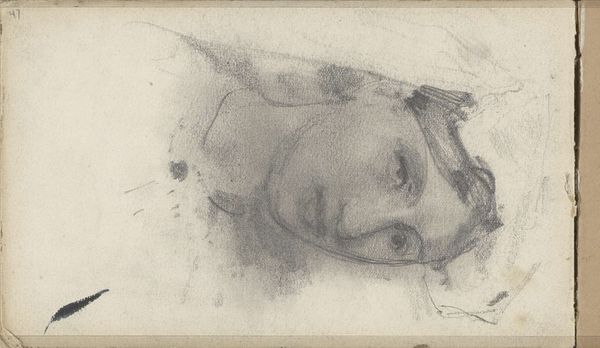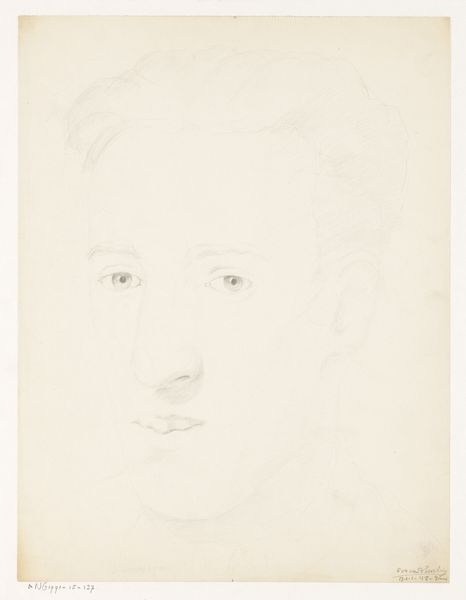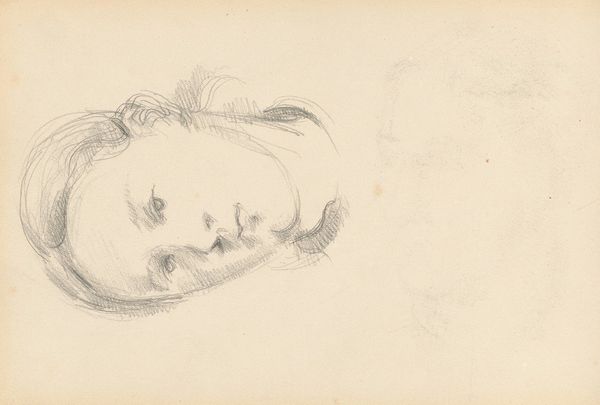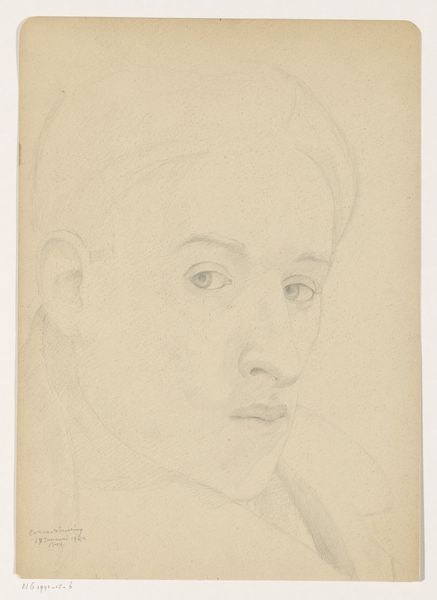
drawing, pencil
#
portrait
#
drawing
#
figuration
#
pencil drawing
#
pencil
#
portrait drawing
#
realism
Copyright: Rijks Museum: Open Domain
Curator: Standing before us is "Boy's Head, Seen from the Front" by Bramine Hubrecht, created sometime between 1865 and 1913. It’s currently housed right here in the Rijksmuseum, a delicate pencil drawing. Editor: My immediate reaction is one of fragility. The lines are so faint, almost ephemeral. He seems caught between youth and something more knowing, like a nascent self-awareness. Curator: That pensiveness connects to a long tradition of representing childhood, often through idealized or sentimentalized lenses. What makes this interesting to me is how Hubrecht avoids overt sentimentality. Editor: The eyes are so direct, almost unsettling in their gaze. There’s a vulnerability, certainly, but also a startling lack of childish innocence, considering his age. Do you think it speaks to anxieties about shifting social norms at the time? Curator: Possibly. During that era, portraits served more than just capturing likenesses; they reflected societal values and class aspirations. A subject, rendered so simply and devoid of background context pushes back. This forces us to contend solely with his internal experience. It is what lies within. Editor: Precisely. The blank space becomes a canvas for our own projections, colored by the turbulent social and political landscape of the time. Consider the rise of psychological studies, an interest in inner life… did that impact its reception? Curator: I think it likely influenced how viewers perceived it. It moves past documentation. The realistic portrayal feels charged with a desire to understand interiority rather than just presenting a surface. Editor: The simplicity of the medium—pencil on paper—reinforces the honesty, the lack of artifice. And yet, such restraint paradoxically amplifies its psychological impact. The incompleteness compels our contemplation of both the boy and the circumstances behind such simple portraiture. Curator: It makes me wonder how it challenges conventions of portraiture, and questions traditional displays of status, replacing it with an introspective moment of humanity. Thank you, this conversation really gave me a new perspective on how the visual codes reflect wider social anxieties. Editor: Absolutely. Exploring it together, peeling back its layers, offers richer understanding of the artist, subject, and how it invites its viewers to participate.
Comments
No comments
Be the first to comment and join the conversation on the ultimate creative platform.
